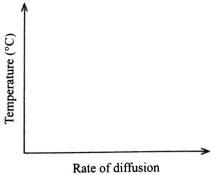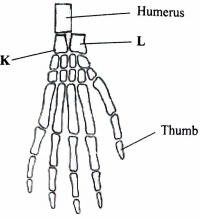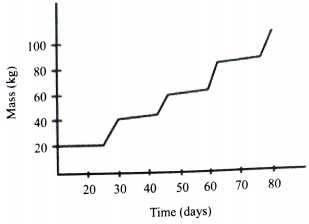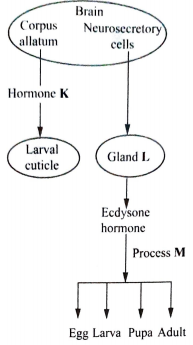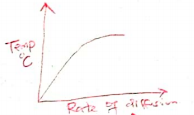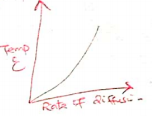Instructions to candidates
- Answer all the questions.
- Candidates should answer the questions in English.
Answer all the questions in the spaces provided.
- Name the taxonomic grouping that contains individuals with most similarities. (1 mark)
- Name the characteristic of living organisms shown by each of the following:
- budding in yeast; (1 mark)
- enlargement of the eye pupil in dim light. (1 mark)
- Explain why there is no grass in most dense forests. (2 marks)
- State one structural difference between a cell wall and a cell membrane. (1 mark)
- The diagram below shows an organism in a certain Kingdom.
- Name the Kingdom to which the organism belongs. (1 mark)
- State the mode of nutrition for the organism. (1 mark)
-
- Name the part labelled E. (1 mark)
- State two functions of the part labelled E. (2 marks)
- State the importance of a well-developed blood capillary network in the alveoli. (1 mark)
- Name the genetic disorder in humans that is characterised by inability of blood to clot. (I mark)
-
- Sketch a graph on the axis below showing how temperature affects the rate of diffusion. (1 mark)
- Account for the shape of the sketch made in (a) above. (2 marks)
- Sketch a graph on the axis below showing how temperature affects the rate of diffusion. (1 mark)
-
- Explain why plants have lower respiratory rates compared to animals. (l mark)
- State two situations in plants when the rate of respiration rises more than normal. (2 marks)
- Explain why most plants growing in water-logged areas die before attaining maturity. (3 marks)
- The diagram below shows the plan of a pentadactyl limb.
Name the bones labelled K and L.
K (1 mark)
L (1 mark) - With reference to germination explain:
- the meaning of the term imbibition (1 mark)
- why the dry mass of the endosperm decreases while that of the embryo increases. (2 marks)
- State two characteristic features used to classify members of Class Coniferales. (2 marks)
- The graph below represents a growth curve in a certain Phylum.
- Name the type of growth curve shown. (1 mark)
- Name the Phylum where members show the type of growth curve illustrated. (1 mark)
-
- State two limitations of using fossil records in retracing evolutionary history of living organisms.(2 marks)
- Describe cell biology as an evidence of organic evolution. (3 marks)
- The illustration below shows a summary of the main phases of the human menstrual cycle.
- Name the process that takes place around the 14th day. (1 mark))
- Name two hormones produced at the follicular phase. (2 marks)
- Under which two conditions would the cycle be interrupted? (2 marks)
- State two reasons why blood reaching the glomerulus is always under high pressure. (2 marks)
- During a clinical laboratory test, some sugar was detected in an individual's sample of urine.
Name:- the hormone that was deficient in the patient: (1 mark)
- the gland that produces the hormone named in (a) above; (1 mark)
- the disease the individual was likely to be suffering from. (1 mark)
- The graph below illustrates the effect of pH on certain protein-digesting enzymes, S and T.
- Name enzymes S and T.
S (1 mark)
T (1 mark) -
- Name the part of the alimentary canal where enzyme T is likely to be found. (1 mark)
- Explain your answer in b(i) above. (2 marks)
- Name enzymes S and T.
- Explain the biological significance of completing a dose of antibiotics. (3 marks)
- State two reasons why females with Turners' Syndrome are infertile. (2 marks))
-
- Define the term "field of view" as used in microscopy. (1 mark)
- State two functions of the body tube of a light microscope. (2 marks)
- Give a reason why it is not advisable to use water in cleaning a microscope. (1 mark)
- Explain the role of blood capillaries in thermoregulation. (2 marks)
- The illustration below shows the effect of hormones on insect growth and development.
- Name:
- the hormone K (1 mark)
- gland L that produces ecdysone hormone (1 mark)
- State the role of ecdysone hormone in the growth and development of insects. (1 mark)
-
- Name process M (1 mark)
- Account for the rapid increase in size of organisms immediately after moulting. (2 marks)
- Name:
-
- Complete the table below on the adaptations and functioning of some structures in a dicotyledonous stem. (2 marks)
Part Adaptation Cambium Parenchyma - Explain why the leaf of a sisal plant has a thick and shiny cuticle. (2 marks)
- Complete the table below on the adaptations and functioning of some structures in a dicotyledonous stem. (2 marks)
- Explain why an individual with blood group AB can only donate blood to an individual with the same blood group. (2 marks)
- The diagram below illustrates a set of biological processes in a green plant.
- Name:
- process N (1 mark)
- polysaccharide p (1 mark)
- State two conditions necessary for the formation of compound Q. (2 marks)
- State two environmental conditions necessary for process N to take place. (2 marks)
- Name:

MARKING SCHEME
- Species.
-
- Budding in yeast;
- (Asexual) reproduction; Rej sexual
- enlargement of the eye pupil in dim light.
- Irritability/ Response (to stimulus) /Sensitivity
- Budding in yeast;
- Form canopies/shadows/shade; which prevent light from reaching grass; grass die/fail to flourish due to their inability to photosynthesis;
- Cell wall is (fully) permeable while cell membrane is semi-permeable.
(cell wall has larger pores while cell membrane has smaller pores) - Cell wall is (mainly) made up of cellulose (fibres) while cell membrane has a (double) protein layer sandwiching a lipid layer; Acc. lipoprotein
- Cell wall is rigid, tougher ( cannot burst) while cell membrane is weaker (bursts)
- Cell wall is (fully) permeable while cell membrane is semi-permeable.
-
- Fungi; Acc. fungi
- Saprophytism/saprophytic/food on dead decaying (organic) matter; Rej. Saprophyte
-
- Hypha/Hyphae; Acc. mycelium Rhizoids
-
- Secretes digestive enzymes(for external digestion);
- Anchors the organism/mushroom (firmly) onto the substrate. Acc. anchorage.
- Absorbs digested food materials/Absorbs water and mineral salts/ions.
- Increases the surface area for (efficient) exchange/transport of respiratory gases ( oxygen and carbon (IV) oxide)
- Haemophilia; Acc. Hemophilia
-
-
- The rate of diffusion increases with the increase in temperature; Increase in temperature increases the kinetic energy of the (diffusing) molecules (increasing the rate of diffusion).
-
-
- Plants are less active than animals, hence require lower amount of energy than animals.
-
- During germination (to generate energy required for the process.
- During rapid growth/cell division (at the tips of roots/shoots).
- During active uptake/transport of substances (through the roots).
-
- Waterlogging submerges the plant root system; Cutting off supply of oxygen to the roots/soil surrounding the roots.
- (Aerobic) respiration in the roots is hampered
- active uptake/transport of materials is affected (leading to the death of the affected plants).
- K- Ulna
L- Radius -
- (Rapid) absorption of water by (germinating) seed (through the micropyle/seed coat).
- During germination, stored food in the endosperm is broken down/hydrolyzed/oxidized; to provide nutrients for the growing embryo.
-
- Presence of cones
- Naked seeds, seeds not enclosed in fruits
- Xerophytic characteristics/needle-like leaves/ thick waxy cuticle/sunken stomata.
-
- Intermittent/staircase (growth curve)
- arthropoda; correctly spelt
Acc. arthropoda/Athropoda/athropoda Rej. Anthropoda/ anthropoda
-
-
- Missing links due to complete decomposition of some organisms.
Acc. some parts decomposing - Distortion of parts during sedimentation.
- Destruction of fossils by geological activities (earthquakes/faulting/mass movement of earth surfaces/volcanicity)
- Missing links due to complete decomposition of some organisms.
-
- Presence of similar cell organelles ( mitochondria, ribosomes,lysosomes);
- Similar biological chemicals(ATP/proteins/DNA);
- Similar blood pigmentation in tissues of some groups of animals show they have a common phytogenetic origin.
-
-
- Ovulation
-
- Follicle stimulating hormone Rej. FSH
- Oestrogen/Estrogen
- Luteinizing hormone Rej. LH
-
- Sickness
- (Drastic) change in weather/environment.
- Pregnancy/Implantation/Conception Rej. fertilisation
- Emotional instability (anger, stress, anxiety).
-
- Renal artery branches directly from (dorsal) aorta whose blood under pressure
- Afferent arteriole/supplying blood is broader than efferent taking out blood.
-
- Insulin
- Pancreas
- Diabetes mellitus Rej. Diabetes alone
-
- S - Pepesin; Acc. Chymosin/Rennin Rej. Renin
T- Trypsin -
- Duodenum
- In the duodenum, the medium is alkaline/basic; favouring the optimal working of the enzyme (T) as illustrated
- S - Pepesin; Acc. Chymosin/Rennin Rej. Renin
- To completely kill/contain the (targeted) pathogens; Since failure to take full dose accords the pathogens an opportunity to develop resistance to the drug; the pathogen mutates(overtime) giving rise to a new strain; finally the drug becomes ineffective.
-
- They lack ovaries
- Have small uterus
- Less number of chromosomes.
-
- A circular area seen (on the stage) when focusing/viewing through the eyepiece of a microscope.
-
- Holds the revolving nose piece/objective lenses in place
- Holds the ocular/eyepiece (lens) in place
-
- To avoid rusting
- To avoid interference with visibility of the lens.
-
- Constrict during cold/low temperatures; to conserve heat
- Dilate during hot/high temperature; to facilitate heat loss
-
-
- Juvenile (hormone)
- prothoracic (gland)
- Ecdysone (hormone) causes metamorphosis; or causes the larval stage (of an insect to change/metamorphosize into pupa and pupa into adult.
-
- Complete Metamorphosis
- During moulting (the tough/hard impermeable) exoskeleton is shed; allowing the (soft permeable) larvae to take in air/water leading to rapid growth (which in turn results to increase in size of the organism).
-
-
-
Part Adaptation Cambium (Small) cells with dense cytoplasm to enable rapid mitotic division/giving rise to secondary growth. Parenchyma Have thin walls for faster passage of materials
have large vacuole/irregular shape for storage/provide space for packing. -
- (Sisal is a xerophyte) the thick cuticle enables it to conserve water; reduce water loss;
- It is shiny to reflect light,minimizing evaporation by radiation.
-
- The individuals blood has both antigen A and B; which will coagulate/agglutimate with antibodies a and b; found in individuals with blood groups A,B and O; OWTTE
-
-
- Photosynthesis
- Starch
-
- Respiratory enzymes
- Absence/little oxygen
-
- Optimum temperature
- Light
- Water/Moisture
- Carbon (IV) oxide
-
Join our whatsapp group for latest updates
Tap Here to Download for 50/-
Get on WhatsApp for 50/-
Download Biology Paper 1 Questions and Answers - KCSE 2020 past papers.
Tap Here to Download for 50/-
Get on WhatsApp for 50/-
Why download?
- ✔ To read offline at any time.
- ✔ To Print at your convenience
- ✔ Share Easily with Friends / Students


